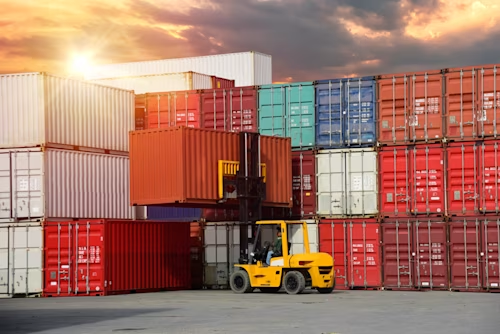
What is a Digital Bill of Lading?
A Bill of Lading (BoL) is a legal document issued by a carrier—typically a small or independent transportation line—to a shipper or manufacturer, that details the type, quantity and destination of cargo to be sent to a receiver or customer (often a wholesaler or retailer).

A bill of lading (BoL) is a legal document issued by a carrier—typically a small or independent transportation line—to a shipper or manufacturer, that details the type, quantity and destination of cargo to be sent to a receiver or customer (often a wholesaler or retailer).
A vast majority of carriers, shippers and receivers still conduct their BoL process through carbon-copy paper stacks, which creates unnecessary waste, carbon emissions and landfill. Many haven’t yet digitized the process through an e-signature platform. But it’s really not hard at all.
A digital process not only helps alleviate supply chain disruption, it can also save carrier drivers—whether employees or contractors—time and money.
There’s a volume benefit to carrier firms, too: The more successful shipments they make in a given timeframe, the less cost they incur.
And as we’ll explore further, digital BoLs can help reduce legal problems for all involved in the long-term.
How does a digital Bill of Lading work?
E-signatures enable faster and more efficient BoL transactions, which are as secure as a traditional BoL—often more, as hardcopy BoLs are many times misplaced. That can’t happen through an electronic process, as all documents are stored in a central repository.
Here are the steps to using a digital BoL:
A carrier driver or procurement officer originates a digital BoL in Google Workspace or Microsoft Office, then transmits it to a shipper over an e-signature platform.
The shipper then signs the BoL, or kicks off a sequence of sequential signers, before cargo is loaded.
The platform sends an automatic alert to each signer via SMS on their respective phone or tablet when it’s their turn to sign.
The driver checks the cargo one last time after it’s loaded, and finalizes the initial e-signature process.
The receiver signs the BoL at the customer destination, once the cargo arrives and is checked for accuracy.
The platform automatically and digitally stores the BoL for later search.
What are the benefits of a digital BoL?
Improved speed in sharing BoLs with shippers and receivers.
Enhanced security through digital encryption with multiple options for verifying a signer’s identity before they can access the document and sign.
Automatic creation of a digital audit trail, providing visibility into the e-signature process at every step.
Assurance of “best evidence” approach to e-signature BoLs, such as proof of cargo ownership and transfer of cargo title during shipping phases. This is critical if cargo is misplaced during transit or if there’s a dispute on who owns what, when.
Easy sharing of cargo status and recovery among shippers, carriers and receivers, as well as brokers—those who match independent-driver owners/operators to freelance transportation logistics jobs.
Contribute to environmental sustainability, as compared to the energy required to process and dispose of carbon-laden paper stacks.
Payment or invoice transmission upon sender signing, potentially shaving days/weeks off of Days of Sales Outstanding.
What are the legal benefits?
Recognize revenue at signing. Important from a revenue-recognition perspective: Suppliers can recognize revenue as soon as they sign a digital BoL, which is usually just before the cargo is in transit. A BoL e-signature is confirmation of a sale of goods; and e-signature is legally admissible in court as evidence if revenue claims are challenged.
Prove or disprove ownership after cargo loss or theft. From a legal standpoint, if cargo is lost during transit, the cargo supplier must be able to prove that the receiver had title and ownership of the cargo as the incident occurred.
If there’s a dispute as to who owns cargo at any time, a digital BoL can serve as evidence, as it details who has electronically signed and when. It goes without saying: this feature is exceedingly important when shipping high-value merchandise.
Aid in proving insurance responsibility if cargo is damaged. Similarly, if cargo is damaged during shipment, an insurance payout could be up to the carrier’s or the receiver’s insurance—but it’s ultimately dependent upon how the agreement is initially set up between the buyer and seller of the goods. While a digital BoL can’t be used as evidence of insurance, it can be used as evidence of who is responsible for cargo during specific timeframes.
The international trade industry has increased focus on the need to move towards greater adoption of digital BoLs. It was noted at the G7 Digital and Technology Ministers’ meeting on 28 April 2021 that paper-based transactions are “a source of cost, delay, inefficiency, fraud, error and environmental impact”. The secretary general of the ICC’s UK chapter has urged players in the industry to be prepared for the widespread adoption of e-Bills within the next 12 to 18 months.
Digitizing your BoLs is easier than you think
Learn more about how Docusign eSignature can help transport your digital BoL process from vision to reality.

Ted Sclavos builds content experiences at Docusign that help our customers learn about agreements and intelligent agreement management.
Docusign IAM is the agreement platform your business needs


